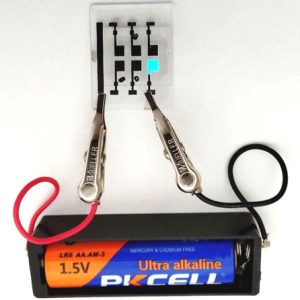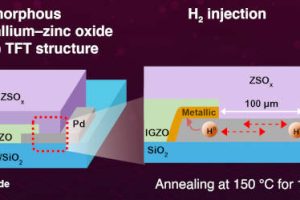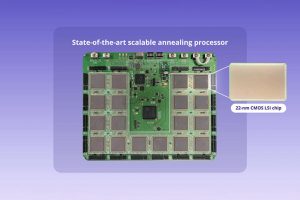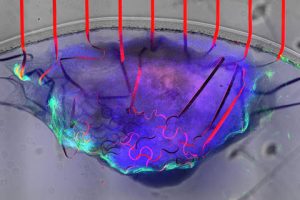
“Conventional blue OLEDs typically require around 4V for a luminance of 100cd/m2, this is higher than the industrial target of 3.7 V – the voltage of lithium-ion batteries,” according to the Institute.
Its trick is to use an up-converting phosphor, in this case where two low-energy (1.7eV) triplet states are excited, and then triplet-triplet annihilation is promoted to produce a single emissive singlet (462nm peak emission = 2.68eV).
Holes are injected into the donor (emitter) layer and electrons are into the acceptor (electron transport) layers. They recombine at the donor-acceptor interface to form a ‘charge transfer state’, said Tokyo Tech. The energy of the charge transfer state is selectively transferred to the triplet excited states, from which the blue emissive singlet forms.
“The intermolecular interactions at the donor-acceptor interface play a significant role in charge transfer state formation, with stronger interactions yielding superior results,” said lead researcher Seiichiro Izawa.
Keys to effectiveness were optimisation of this donor-acceptor interface, and material selection. The latter were:
- acceptor: NDI-HF (2,7-di(9H-fluoren-2-yl)benzo[lmn][3,8]-phenanthroline-1,3,6,8(2H,7H)-tetraone)
- donor: 1,2-ADN (9-(naphthalen-1-yl)-10-(naphthalen-2-yl)anthracene)
- fluorescent dopant: TbPe (2,5,8,11-tetra-tert-butylperylene)
Tokyo Tech collaborated with Osaka University, the University of Toyama, Shizuoka University and the Institute for Molecular Science.
For full details, read ‘Blue organic light-emitting diode with a turn-on voltage of 1.47 V‘ in Nature Communications.
 Electronics Weekly Electronics Design & Components Tech News
Electronics Weekly Electronics Design & Components Tech News



